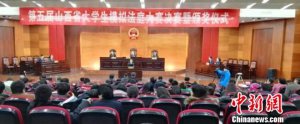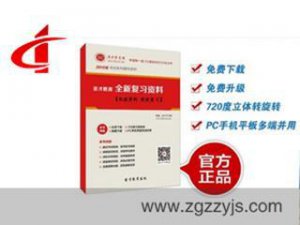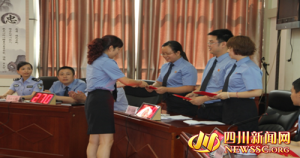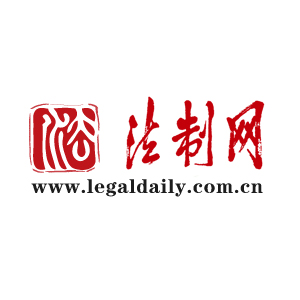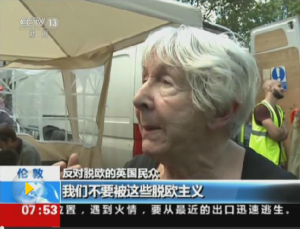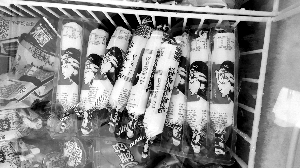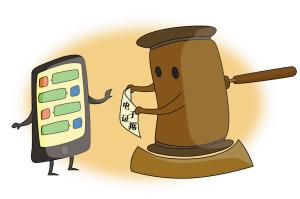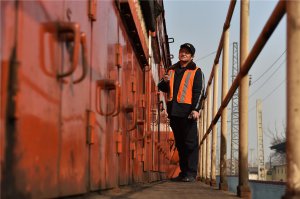|
The SOE reform in China Zhou Dayong Summer semester 2003 Europa-University Viadrina,Germany Abstract: The essay tries to study the process of the state-owned enterprise (SOE) reform in China. Chinese economic reform resulted in significant influences on all social aspects, SOEs as an especially economic sector suffers a change both in internal management as well in the outside economic environment. I try to discuss in the essay, that the Chinese SOE reform has made large progress, however, SOE can’t conquer many problems by itself, the resolution of SOE lies in elimination of SOE by a further reform including property transition and construction of a fairer market. Outline 1. History of the SOE reform in China 2. The main problems left in the reform 3. The reasons of SOE problem behind 4. Argue of some reform plans and suggestion 5. Conclusion 1. The history of the SOEs reform in China 1.1 the establishment of SOE In 1949, the Chinese Communist Party (CCP) came into power in Mainland China. One goal of the CCP was to lead China into a modern socialism society. In economic scale, it meant mainly industrialization. According to CCP’s policy, the form of industrial organization must be based upon state owned enterprises. The state-owned industrial system was set up by two ways. One was the new enterprise after the liberation. At the end WWII, most industrial sectors in China, such as communication network, transportation and power industry were destroyed and had to be rebuilt, at the same time, military industries and financial sector e.g. banking system was directly nationalized from the former control of Gongmin Party. Another way was transformation from the private ownership to state-owned enterprises. The private properties were regulated under state management, in some cases, for instance in commercial scale, the former private enterprises were bought by local government gradually. Till 1952, about 83% of industrial companies were controlled by the state; a socialism economic system was announced established. (Fig 1) 1.2 The reform began from 1978 Until Chinese economic reform began in 1978, public ownership in forms of state-owned and collectivized were only legal ownership of property. In industrial sector, the enterprises were controlled respectively under central or local governments, the latter made decisions for the enterprises, the enterprises were not profit seeking economic entities, they were simply workshops to execute centrally set policies. In 1970s, the discontent of economic situation accumulated constantly, because the defects of central planning system became obviously more and more. Around 1978, the rural reform took place from grass roots and spread quickly, till 1982, the collectivized people commune had to be abolished. In company with the reform, the free market in a certain degree was developed. At the same time, the problem of lack of autonomy in SOE, which led to low efficiency, was also taken into account. Therefore, from 1978 on, the Communist Party, under the leading of Deng Xiaoping, put hand to solve the SOE problem. From 1978 to 1984, the efforts of the reform concentrated on giving the SOEs more autonomy by allowing them increased authority over the allocation of their profits, and limited production autonomy. The rest profits could be used either to finance increased investments or to pay bonuses to employees. Besides, administrative control over SOEs was decentralized to local governments. But as the prices were still centrally determined and SOEs did not realize the cost of their fixed and working capital, the reforms did not improve much the resource allocation or the utilization of capital. (1) 1.3 Contract is the main form in the second phase. From 1985 to 1992 was the second phase of the SOE reform. The policy named Zhenqi Fenkai (separating government from enterprises), the central government decided to turn SOEs into truly independent production and management entities, and stipulate that enterprises must take responsibilities for their own profits and losses by means of contracts and leasing. The common practice was: the enterprises sign a manage contract with the responsible authorities. Under the contract, enterprises were not only allowed to retain the extra profits after they had fulfilled the contracted quotas, but also allowed to arrange their own manage including dismiss or enroll personnel. By the end of 1987, about 80% of state-owned industrial enterprises adopted the contracts system. In 1991, over 90% of the previously contracted enterprises signed the second round of contracts. Meanwhile, based on the first round contract practice, the content of the contract was improved; the authority introduced more rational norms to examine the fulfillment of contract. A multiple index system was formed, which included economic efficiency index, development potentiality index and management index etc. During this period, the practice of shareholding reform appeared as well. This new creature was adopted at first by village enterprises, which come from the former collective enterprises. The village enterprises were always short of capital, so they raised money from the village residents. Along with the reform moved forward from countryside to cities, the shareholding system was also introduced into SOE reform. Early in April 1984 Chinese reform committee organized a seminar to discuss the exploitation of shareholding in SOE reform. That conference drew a conclusion that shareholding system is a rational way to restructure the collective and state owned enterprises in cities. In July the same year, the first shareholding company after Chinese liberation—Beijing Tianqiao department store (shareholding) came onto horizon. Till 1991, there were already 709 state owned enterprises restructured along shareholding system. These enterprises included industrial sector companies, trade companies, also financial enterprises, construction enterprises etc. Besides, in the second phase of SOE reform, tax system had also a great change. Instead of handing in profit, SOEs paid a certain portion of tax according to their revenue level. The State and local government collected tax separately; this measure was implemented to loose the relation between SOE and local authority. However, during this period, the SOEs showed their weakness in competition with the new developed private companies, joint venture companies and township and village enterprises, because at one side, the manager of SOEs didn’t get use to do business in a free market, the attitude of waiting, relying on government and begging for help were widespread. At another side, the relationship between government and enterprises became more complicated, because, although under the contract system, the government have no right to interfere in the SOEs management, they still rely on each other: the government need the SOE to have good performance in order to settle surplus labor forces and continue to play a role in maintain the social stability, at the same time, to increase the government’s revenue to deal with the raising infrastructure investment and other expense. The SOE, on the other side, need the protection of the authority, in order to obtain more chance to get loans, subsidizes or orders in government arranged projects. Besides, even though most of direct subsidies form the state have been cancelled, many domestic savings were also channeled into SOEs, because banks had been directed to take up the role of making "loans" to SOEs instead of the state. The total of non-performing loans has grown so large that it started to endanger the banking system. (2) 1.4 The MES is the key point in the third phase of the reform and the achievements Form 1993 on, the reform moved into the third phase, the aim called setting up the modern enterprises system (MES). The Third Plenary Session of the 14th Party Central Committee in November 1993 proposed: "It is the inevitable request for market economy to set up modern enterprise system, it is a direction of the SOE reform of China. "This indicates that SOE reform enters a new stage of system innovation. In 1994 the State Council determined to chose 100 state-run large and medium-sized enterprises to launch an experiment to implement restructure along MES. The basic demands of the experiment were to "define right and responsibility clearly, separate government function from enterprise management, and operate scientifically”. Those requirements were in fact the basic characters concerning modern enterprises system. Along the policy of building MES system, and based upon the development of the whole economy, there were many achievements reached in the third phase. 1) By 2000, most large and middle scale SOEs have set up modern enterprise system tentatively. According to the investigation in 2473 enterprises of State Statistics Bureau 2000, 2016 enterprises have restructured, account 81.5%. Among those enterprises, 603 turned to Co., Ltd., accounts for 29.9%; 713 were restructured to limited companies, accounts for 35.4%; the number of solely state-owned company is 700, accounts for 34.7%. As for their management, 82.2% established shareholders’ meeting, 95.1% established the board of directors, and the board of supervisors has been established in 84.5% of enterprises. Therefore, corporate governance structure has already taken shape in SOEs. 2) In this phase, during" the Ninth Five-Year Plan", China began to adjust the state-run economic layout strategically, The idea called Zhuada Fangxiao (to grab the big ones and let the small ones go). The reform for medium and large SOEs focused on fostering a batch of trans-regional, inter-trade, inter-ownership big SOE groups through reorganizing, transforming, uniting annex. In 1997, the number of national large-scale enterprise groups expands to 120. For instance, under approval by the State Council, China Petrochemical Corporation, China Oil and Natural Gas Corporation were predominated to two large groups, whose assets of enterprise group reached in 40 billion dollars, such measure improved the intensification degree and international competitiveness of Chinese petrochemical industry greatly. Another example was in telecommunication market, six major SOE telecom groups (China Telecom, China Mobile, China Unicom, China satellite communication, China railway communication) were predominated. So a new form of competition in field of communication service took shape. By the end of 2001, national key enterprises add up to 2710, total assets up to 1,280,450 million dollar. Among 179 super-huge enterprise groups, whose business income is over 500 million dollar, there are 165 state-owned or state-holding enterprise groups. 3) During this phase, separating government function from enterprise management was strengthened harder than before. Chinese government started administrative organization structure reform in 1998. Through this administrative restructure, the departments of the State Council reduced from 40 to 29. At provincial level, government departments reduced from 55 on average to 40, about 20% departments were simply. Some departments were cancelled totally. The cancellation of government departments indicated that the SOE stay in the charge of specialized official department manages changed completely. Meanwhile, the administration rank of the state-owned enterprise were cancelled, some administrative approval procedure were simplified. 4) To relieve the social burden of SOEs, re-employment service center were set up to shunt the redundant staff of enterprises. It has been a great difficult problem of the SOE reform from begin on that enterprises are overstaffed. It is an important measure of revitalizing the SOEs to dismiss and distribute workers. In June 1998, the state council required all regions to set up re-employment service center system. National Ministry of Labor and Social Security emphasized that the laid-off worker in SOEs must 100% enter the re-employment service center. The re-employment service center determined to provide serve functions such as grant basic living cost, withhold social insurance, organize job training and launch employment etc. for laid-off worker. The fund, which used for ensuring laid-off worker's basic life and paying the social insurance premium, come from financial budget, enterprise as well as societies (namely form contribution or from laid-off worker themselves), each part bears 1/3 of the whole fund. The re-employment service center provides service for laid-off workers for at longest 3 years. When they can’t reemploy after this period, can still enjoy unemployment compensation or the society relieve according to relevant regulation. In this reform stage, re-employment service center played a positive role on maintain social stability. From 1998 to the end of 2001, 25,500,000 laid-off workers emerged (Fig 3) in national state-owned enterprises, among them more than 17 million people were reemployed, more than 3 million people retired. However, re-employment service center was only a transitional institute, because the SOE had to still take responsibility to settle down those laid off workers. According to a new policy, all laid-off workers after 2001 are treat as unemployed and have to enter free labor force market. 5) In order to extricate SOE from predicament, especially to resolve the problem of high liability-asset ratio, by December 2000, 580 SOEs began to implement debt-to-share swap, that mean the enterprises’ debt were recalculated as share (enterprises’ equity), so that the interest burden of SOEs were lightened. In the process, most of unperformed loans would be calculated as shares, which would be gathered and supervised by a new state commission-- State-owned Assets Supervision and Administration Commission (SASAC). Till 2001, the total amount of money of debt-to-equity swap account 40,5 billion dollars, and the result was that the average asset-liability ratio of debt-to-share swapped enterprises dropped from more than 70% to under 50%. 2. The main problems left in the reform After three steps reform, the SOE acquired more autonomy, as we have seen, the whole economic circumstance were also better. But because the reform did not touch the socialism idea from begin on, thus the transition of ownership of SOE was left basically unchanged, the defects of SOE could not changed completely. In the context of China’s economic reforms, there are still a few problems in SOE sector existed and have also a deep influence. First of all, the interventions from the government still maintained influence in SOE. The administrative relation between enterprise and government is still remaining. Even the Local State Assets management office was established, it belong to the same bureaucratic system like former authorities. It can appoint or remove senior executives of SOEs. If enterprise applies to the broad structure, the directors in broad are appointed by it. The office has also a say in the transfer of holdings, corporate mergers, closures or other major changes to the enterprises, it is also charged with the tasks of clarifying property rights and settling disputes (3) . It seemed that the state assets supervisory takes the place of former authority above the SOEs. Moreover, the local government maintains still strong power in local enterprise, they rely on each other as we discussed above. So long as the enterprises are state-owned, whether they are big groups, stock companies or little entities, it is difficult to shaking off the directly or indirectly control from the government. Secondly, because of the long tradition, enterprises are still taking responsibilities for their employees in pension, medical areas, therefore the so-called “soft budget constraint” cannot be given up completely. Although we have discussed that the Chinese government has managed to start re-employment plan, SOEs also take a part of the fund to support the plan. Correspondenly, government had to shoulder some failures resulted from the mismanagement of SOEs’ and avoid from their bankruptcy, in order to prevent the enterprise from bankrupcy and thus endanger the social stability. Thirdly, the management of SOEs has low quality compare with other economic sectors. Though SOEs have produced an average 10% growth rate in the value of industrial output during the period 1978-98, this rate is considerably below the average of other sectors. The problem has two reasons. One of them is lacking of the inner incentive of the managers. The SOE managers are not entrepreneurs in the true sense, but bureaucrats at any rate. Their appointment by the government not basically according to their managerial capability, but based on their rankings in the bureaucratic hierarchy through the politic system. Another factor concerns the supervision within the SOE, it is also lacking in most cases. In practice, the position of supervisor in a enterprise is normally taken by staff within the enterprise and in most cases, the position of president of the supervision committee is taken by somebody within the enterprise, who is under the leadership of the directors and managers in his ranks both at work and in the Party. This system makes it very hard for the supervision committee to fully perform its authority (4) . Fourth, the high liability-asset ratio is also regarded as a fatal problem of SOEs. It was observed, that during the reform period, the liability-asset ratio of industrial SOEs rose from around 11% in 1978 to approximately 65% in 1997. In as many as one-fourth of industrial SOEs, liabilities have even come to exceed assets; these enterprises are in fact insolvent. The World Bank suggests that in debt restructuring may be necessary for the most heavily indebted enterprises to bankrupt. After the implement of debt-to-share swap, the ratio decreased, but the debtor, in most cases are banks, didn’t collect the loan back, so it made the SOE even harder to get new loan for production. (5) Furthermore, the whole process of the SOE reform companied by a serials of social problems, in compare to some difficulties such as lack or reserve labor force, ageing of the equipments, the most troublesome is the unemployment in large scales. In addition, in rural areas, millions of flowing population has been produced because of the bankruptcy and low profitability of the township and village enterprise. In urban China there are frequent reports about workers’ unrest. Although until now China still maintain a relative political stability, the menace will not fade away in a short time. 总共3页 1 [2] [3] |


